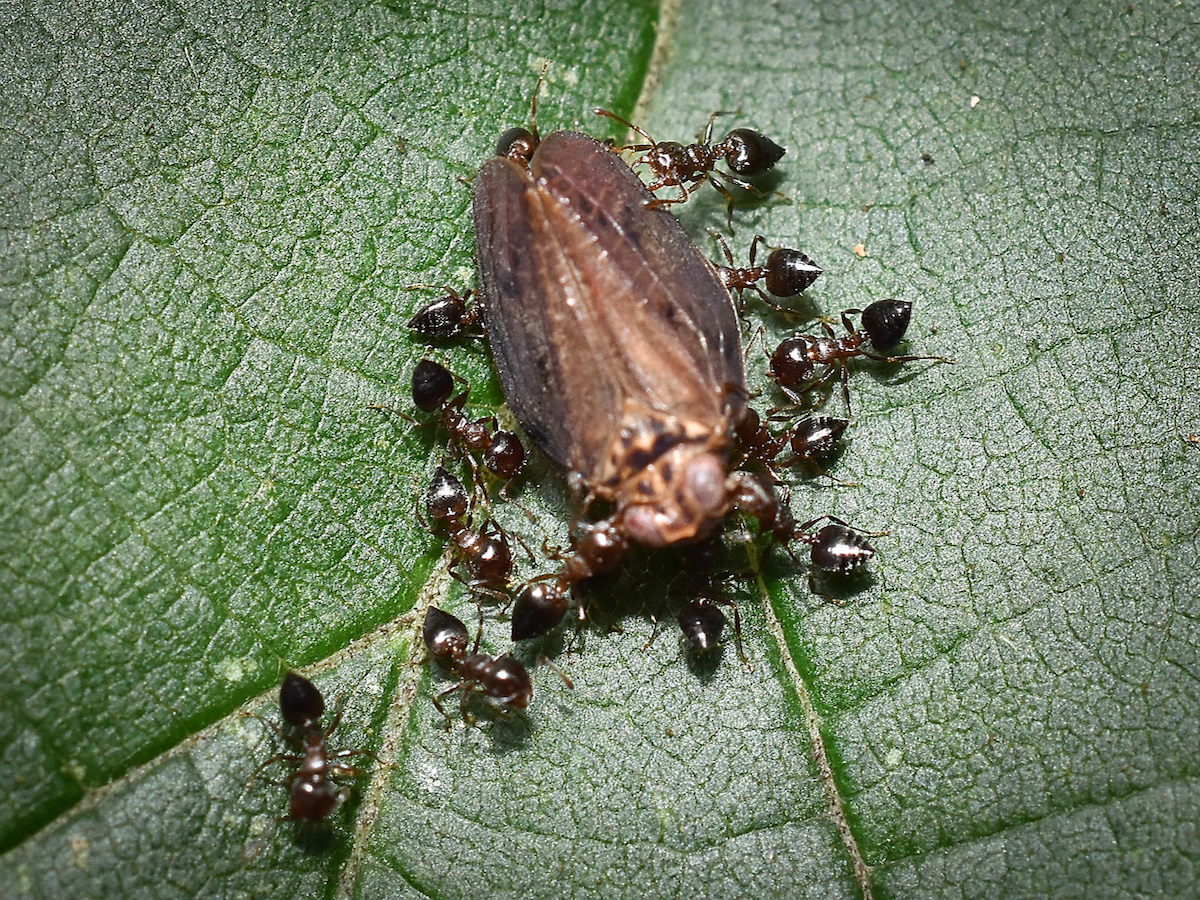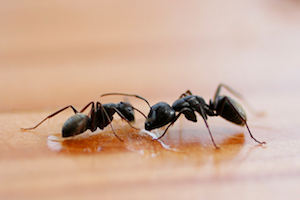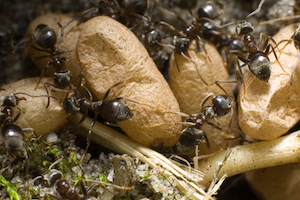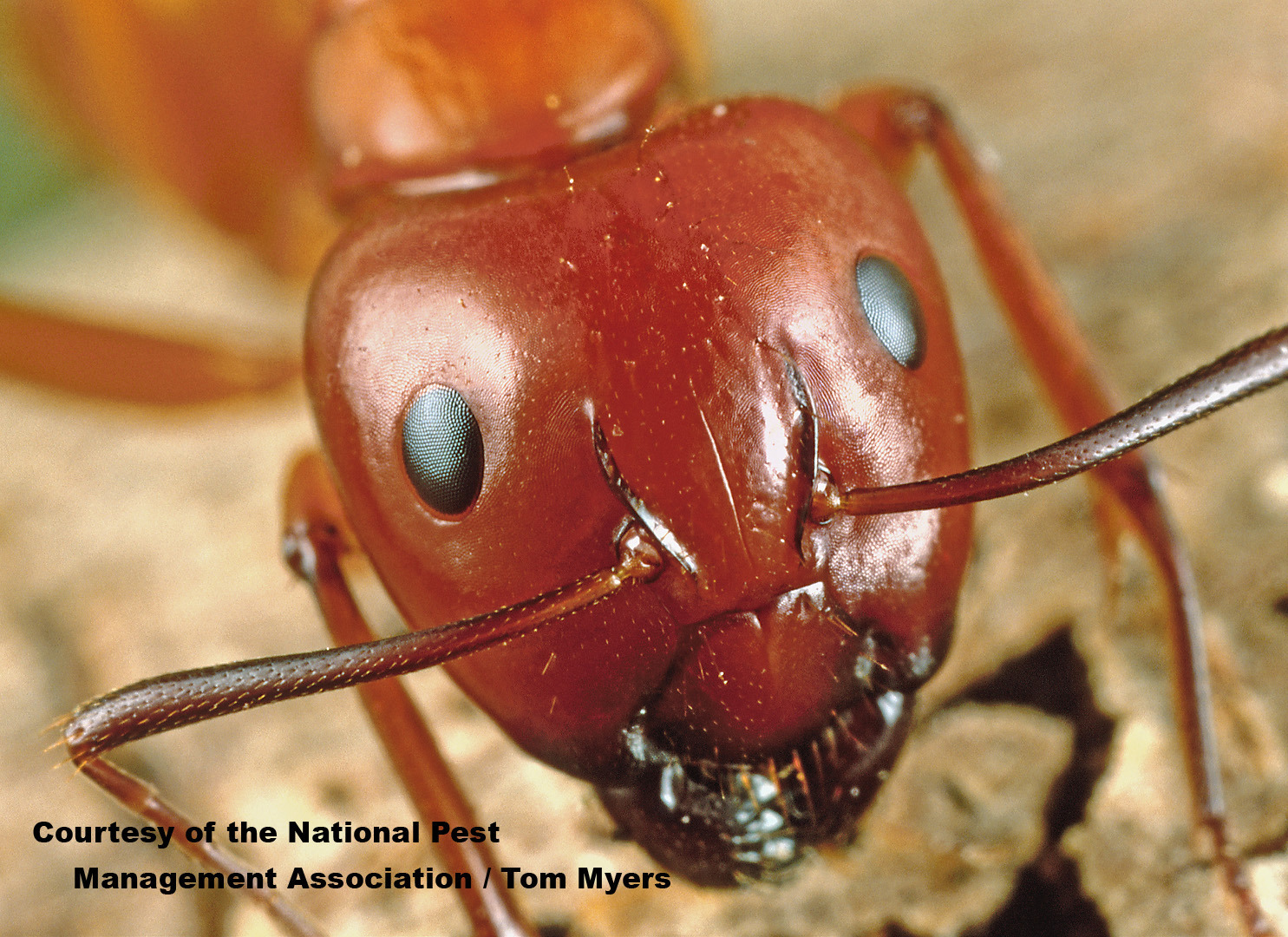Acrobat Ants Crematogaster spp.

Pest Stats
Color: Light brown to black, sometimes multicolored
Size: Workers average 1/8” (3.2 mm) in length
Legs: They have 6 legs
Antennae: Yes
Shape: Heart-shaped abdomen
Region: All
What is an Acrobat Ant?
Acrobat ants get their common name from their ability to acrobatically raise their abdomen over their thorax and head, especially when disturbed. In comparison to other ant species, acrobat ants are nothing more than a slight nuisance. However, if their colony is disturbed, acrobat ants may sometimes bite. There are various species of this light brown to black ant found throughout the United States, even at altitudes of up to 8,000 feet.
What Do Acrobat Ants Look Like?
Acrobat ants are light brown to black in color. They are relatively small, usually measuring about 1/8” (3.2 mm) in length. Queens, however, are generally larger but can range in size up to 3/8” (10 mm) long. Acrobat ants have a segmented body and when looked down upon, the shape of their abdomen resembles a heart. These ants possess a stinger, and their antennae are 11-segment with a 3-segmented club.
Acrobat ants typically feed on honeydew, a sugary waste excreted by aphids and mealybugs. They also eat live and dead insects including termite swarmers. Upon entering a household, acrobat ants are drawn to sweets and high-protein foods like meat.
Like many other ant species, Acrobat ants produce winged males and females also known as swarmers. Acrobat ant swarmers have been observed in nests or actively swarming from mid-June to late September. These insects leave the nest to mate, with the mated females dispersing and becoming queens of their own colonies.
Acrobat ants may bite when threatened and, in some species, workers may emit an unpleasant odor when disturbed. Though not usually causing any significant damage to the wood within a structure, these ants can pose a risk to properties by occasionally stripping the insulation from electrical or telephone wires, which can cause short circuits.
Outside, most species of acrobat ants nest under rocks or in logs, firewood and trees where wood decay allows them to create tunnels. They also build their nests in abandoned cavities carved out by other insects such as termites and carpenter ants.
The workers often find a way inside homes by trailing along tree limbs and entering through cracks or holes around window frames, soffits, door thresholds, and other vulnerable spots. Additionally, they have also been noted to utilize utility lines to enter through the same structural openings that wires and pipes go through. Once inside, acrobat ants nest in wall voids or wood that has been subjected to high moisture and fungal decay – the same conditions favored by carpenter ants. Furthermore, they will nest in wood that has already been damaged by other wood-boring insects, cleaning out previously made galleries. The dirt and wood scraps they push out of the galleries may cause some homeowners to believe that there is an active termite infestation. Acrobat ants have also been known to nest in Styrofoam insulation panels behind siding.
There are many techniques that can be used to prevent acrobat ants. First and foremost, it’s important to keep a close eye on the exterior of the home for visible signs of an acrobat ant infestation as described above. Also on the exterior of the home, seal all possible entry points with a silicone-based caulk, paying close attention to cracks around doors, windows, pipes and utility lines. Eliminate sources of standing water and divert water away from the home’s foundation with properly functioning downspouts, gutters and splash blocks. Furthermore, keep tree branches and shrubbery trimmed away from the house to prevent acrobat ants from gaining entry into the home. Finally, store fire wood at least 20 feet away from the house and five inches off the ground.
Inside, consider using a dehumidifier to prevent moisture buildup. Also, keep all food, including pet food, stored in sealed plastic or glass containers. Homeowners can partner with a licensed pest control professional to develop an acrobat ant prevention plan with additional tactics.
Acrobat ants may bite when threatened. In some species, workers may emit an unpleasant odor when disturbed.
These ants can also pose a risk to properties. Occasionally, acrobat ants will strip the insulation from electrical or telephone wires, which can cause short circuits.
The most obvious sign of an acrobat ant infestation is the presence of actual ant trails on wires, utility lines and pipes coming into walls. Acrobat ants will occasionally forage up to 100 feet away from their nest for resources, so you might spot them trailing along the foundation in search of food. Additionally, debris such as dirt and wood scraps that acrobat ants deposit as they excavate their nests can serve as another telltale sign of an infestation. If the home has siding, look for pieces of foam insulation, which could indicate an acrobat ant nest behind the siding.
Homeowners should also check for moisture damage around the structure of the home, which could attract acrobat ants, carpenter ants and other wood-nesting pests like termites. Keep an eye out for peeling paint, mold or fungal growth, or deteriorating wood along soffits and around window frames.
If you suspect an acrobat ant infestation in your home, contact a licensed pest control professional to conduct an interior and exterior inspection and work with you to develop an acrobat ant treatment plan. A pest professional may inquire about past water leaks, plumbing problems, etc., which could indicate an acrobat ant infestation. In the yard, they will likely check logs, stumps, firewood, tree cavities and loose bark for ant nests. Once the ant species is properly identified, the appropriate control measures can be taken.
You can find a certified pest professional near you with the helpful zip code search below.





